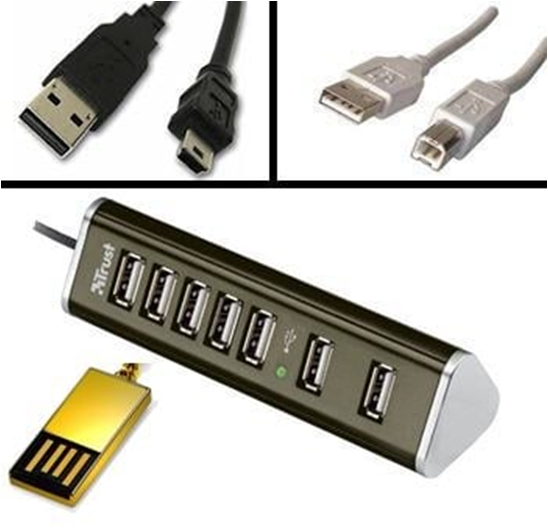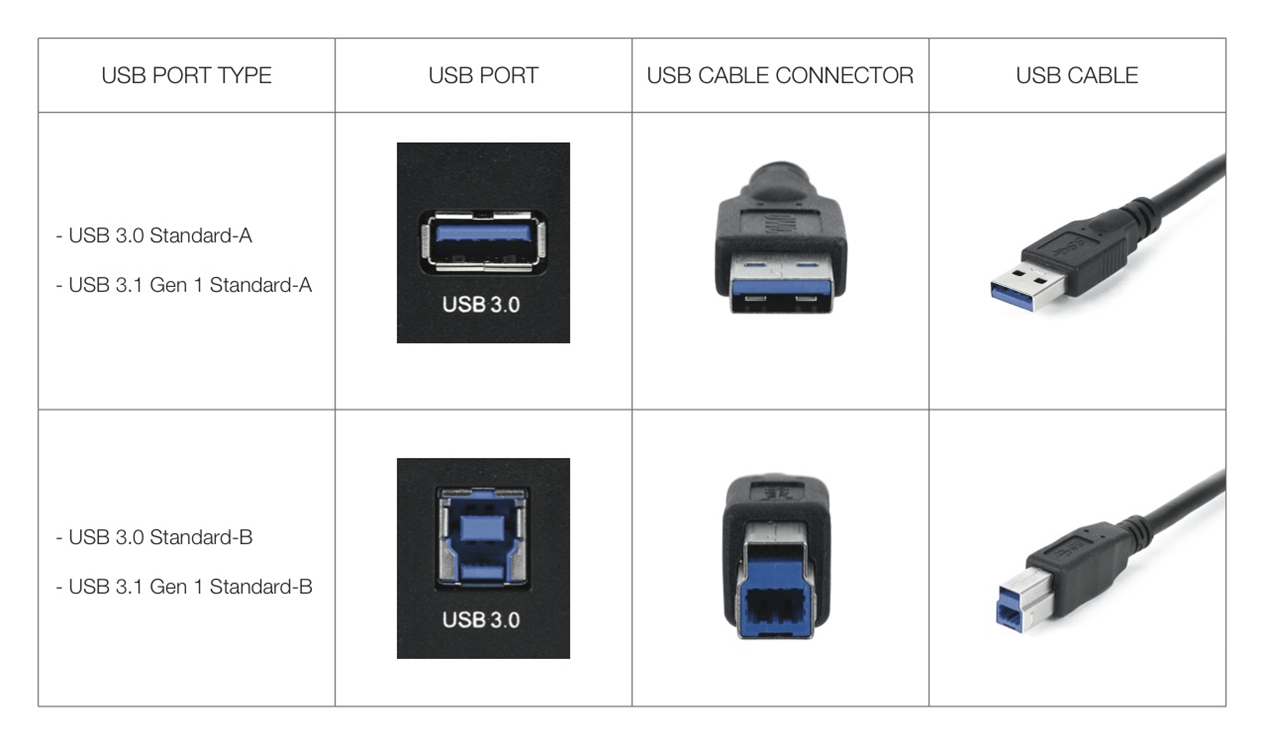USB (Universal Serial Bus)
Introduction
The Universal Serial Bus (USB) is one of the most widely used connection standards for linking peripherals to computers and other devices. It is known for its ease of use, high speed, and versatility, making it an essential interface in modern computing.
1. Overview of USB
-
Plug-and-Play: One of the key features of USB is its plug-and-play functionality, meaning devices can be connected and used immediately without the need to restart the computer. Once a device is plugged in, the operating system automatically detects it and installs any necessary drivers, making it simple to add new peripherals to a system.
-
Common Uses: USB is used to connect a wide range of devices to computers, such as keyboards, mice, printers, external hard drives, USB flash drives, and smartphones.

2. USB Versions
-
USB 2.0:
-
Speed: The USB 2.0 standard provides a maximum data transfer rate of 480 Mbps (megabits per second). This was a significant improvement over previous standards, enabling faster communication between devices like external hard drives, printers, and cameras.
-
Common Applications: USB 2.0 is still widely used for devices that do not require extremely high data transfer speeds, such as mice, keyboards, and audio devices.
-

-
USB 3.0:
-
Speed: USB 3.0 offers a substantial increase in speed, with a maximum data transfer rate of 4.8 Gbps (gigabits per second). This makes it ideal for applications that require faster data transfer, such as high-definition video streaming, large file transfers, and external solid-state drives (SSDs).
-
Backward Compatibility: USB 3.0 is backward compatible with USB 2.0, meaning you can connect USB 2.0 devices to a USB 3.0 port, but the speed will be limited to the slower USB 2.0 rates.
-

3. Power Delivery
-
Power Supply: In addition to data transfer, USB can also supply power to devices. For low-power peripherals, such as wireless mice, keyboards, and USB flash drives, USB can provide sufficient power to operate without needing an external power source.
-
USB Power Rating: USB ports can supply different amounts of power, with the standard USB 2.0 port providing up to 500 mA (milliamps), while USB 3.0 ports can supply up to 900 mA. This is often enough for low-power devices, but higher-powered devices may require a separate power supply.
-
4. Future of USB: USB-C
-
USB-C: The USB Type-C connector is the latest evolution of the USB standard. It features a reversible connector (can be plugged in either way) and supports higher data transfer rates, increased power delivery, and video output. USB-C is expected to become the universal standard for future devices, replacing older USB types like USB-A and USB-B.
Conclusion
USB has become a fundamental part of modern computing, offering fast and reliable connections for a variety of peripherals. With the evolution from USB 2.0 to USB 3.0 and the introduction of USB-C, the technology continues to improve in terms of speed, power delivery, and ease of use. USB is indispensable for connecting devices, transferring data, and powering low-consumption peripherals in everyday computing.
